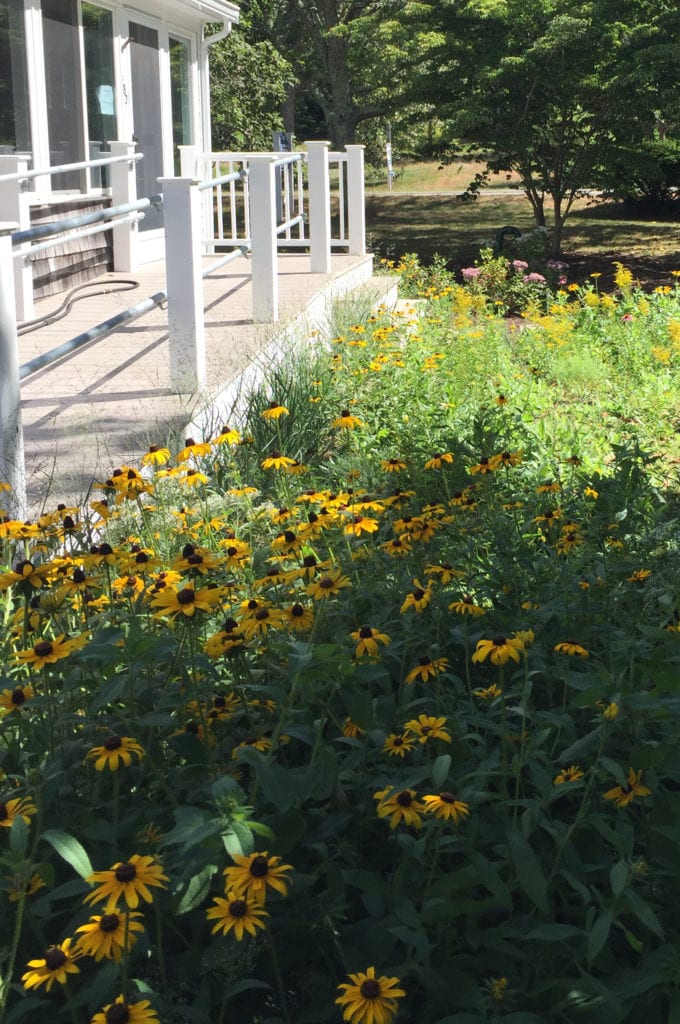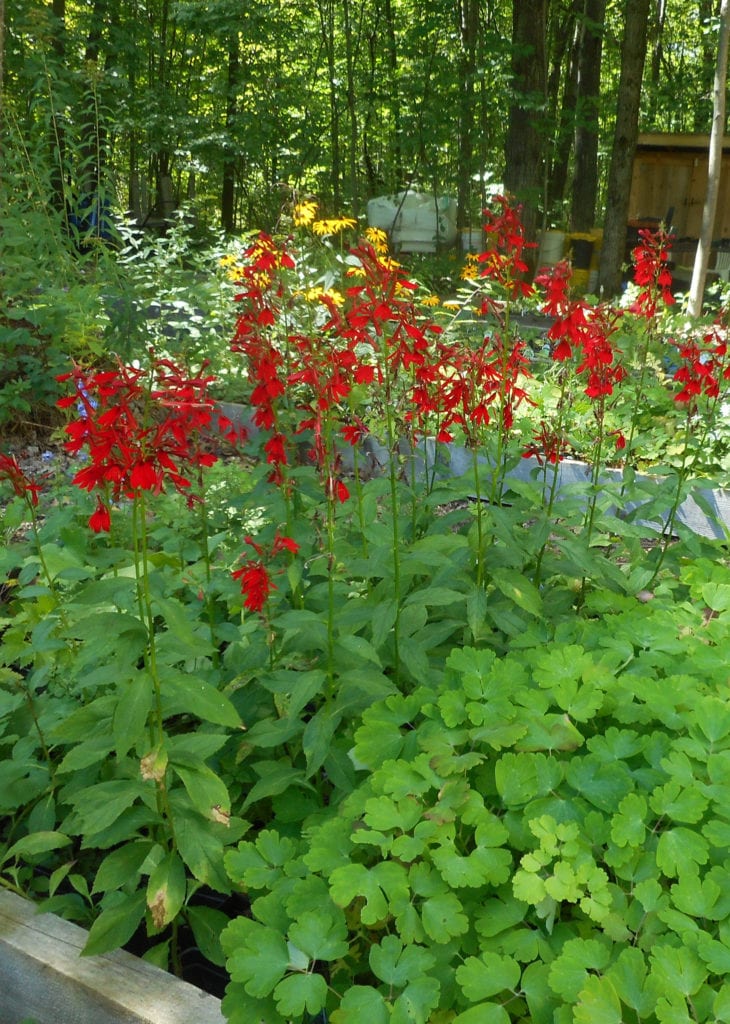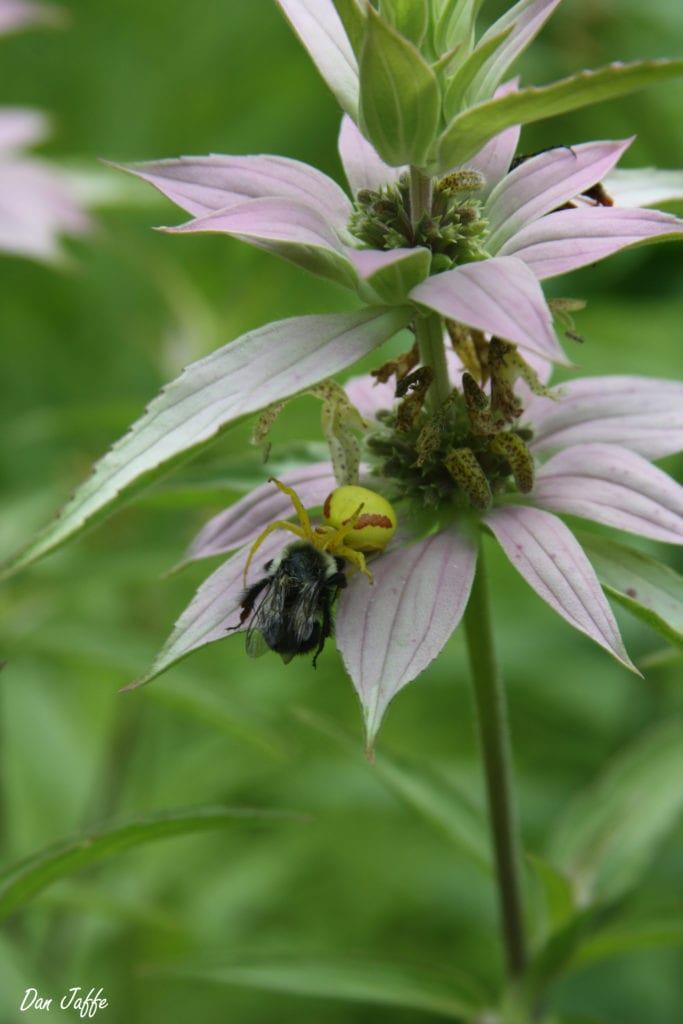This year’s drought has challenged all of our plants, but native plants seem to show more resilience. We asked a few ELA members to name their top five native plants and describe how they “weathered” the season.
Kristin Andres, Association to Preserve Cape Cod, Chatham, MA

Rudbeckia hirta. Photo: Kristin Andres
Plants this season were saved by hand watering and a few hours of shade during the day. My top five?
Asclepias tuberosa – full sun; some showed up as volunteers, naturalizing in the poorest of dry soils. These received no watering and had no competing plants around them.
Asclepias syriaca – full sun; second year plants, naturalized. I love the fragrance.
Monarda punctata – full sun; first year plants received watering in early summer, and then they were on their own. They look well-established for next year.
Rudbeckia hirta – mostly sun; just some light watering kept the garden ablaze all summer. Most robust ones received shade for a third of the day.
Aster divaricatus – full shade; first year plants received once a week hand watering. I think the full shade made all the difference.
Ellen Folts, Senior CNLP and owner Amanda’s Garden, Dansville, NY
I decided to go with our top five sellers. These are all fantastic native perennials:

Lobelia cardinalis. Photo: Ellen Folts
Asclepias incarnata, Swamp milkweed has been a top seller for several years now. Our plants did really well this year with many flowering and producing seed. The seed was ripe about a week earlier than usual. We did see less monarch caterpillars on them this year.
Lobelia cardinalis, Red Cardinal Flower, was lovely this year. Plants in the pots did not get as tall as they usually do. Plants in the ground flowered for a shorter period of time mostly due to the heat.
Asclepias tuberosa, Butterfly Weed, did really well in pots and grew larger than they usually do. They do not like a lot of water. In the ground the flowers did not last very long and seed production was way down. This was probably due to the lack of water and the heat stress.
Monarda fistuslosa, Wild bergamot, looked great both in the ground and in pots. The heat and dryness did not seem to produce any in ill effects. Butterflies, bees, and other insects seemed to relish this plant and depend on it.
Aquilegia canadensis, Wild Columbine, flowered and did well early. The plants in the ground went dormant early. They did produce abundant seed. This is usually the first plant that hummingbirds use for food in the spring, but I noticed before this was in flower that the humming birds were drinking from Jacob’s Ladder. The columbines in pots that got adequate water are in fall color now and just going dormant.
Dan Jaffe, Propagator and Stock Bed Grower, New England Wild Flower Society, Framingham, MA
This list probably changes every five minutes, but my five favorites that come to mind first:

Monarda punctata. Photo: Dan Jaffe
Monarda punctata – What drought?
Houstonia caerulea – A shorter bloom season than normal, but still performed quite well this season
Actaea racemosa – Those individuals in the shade survived better than those in the sun, they wilted down and then popped back up after the few rain events we received. Flowering was notably shorter than usual.
Betula alleghaniensis – Established plants, both young and old, did just fine though I would not have wanted to try planting a new tree without adequate watering for establishment.
Asclepias syriaca (tuberosa for a clumping species) – What drought?
Aside from my personal list, these are the five species that have performed best at Garden in the Woods this season: Asclepias (syriaca and tuberosa), Comptonia peregrina, Pycnanthemum tenuifolium, Senna hebecarpa, and Solidago spp. (too many to list)
Elizabeth Ann Listowich, MCL/MCN; Norpine Landscape, Inc., Kingfield, ME
My top five native plants are Comptonia, Rhus, Aronia, Viburnum, and Amelanchier. The success of most natives is found in their location – typically, ‘right plant=right place’ rules. So when the weather shows its extreme side they tend to ride it out with little impact. Sure, you may see smaller fruit-set when applicable, or earlier leaf turn and drop, but natives can teach us a lot about what to plant and why. And years like 2016 test the mettle of the toughest of native plants, but just take a walk about and you can see small success stories along the way!
***
Each author appearing herein retains original copyright. Right to reproduce or disseminate all material herein, including to Columbia University Library’s CAUSEWAY Project, is otherwise reserved by ELA. Please contact ELA for permission to reprint.
Mention of products is not intended to constitute endorsement. Opinions expressed in this newsletter article do not necessarily represent those of ELA’s directors, staff, or members.

